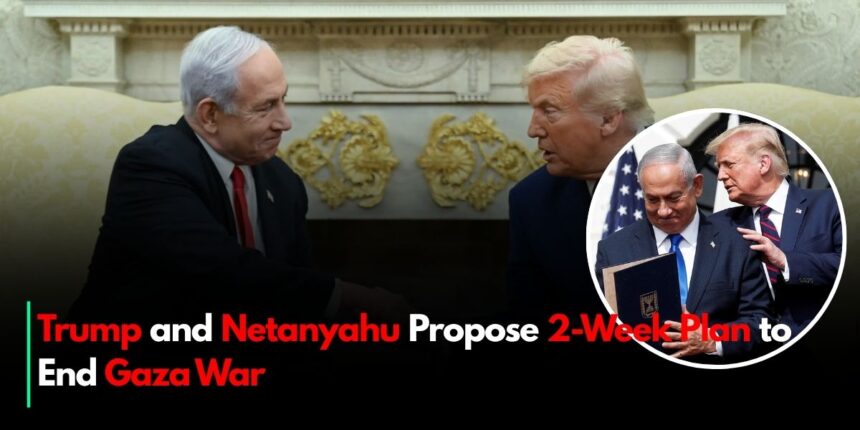In a surprising development, U.S. President Donald Trump and Israeli Prime Minister Benjamin Netanyahu jointly proposed a plan for settling the war in Gaza in two weeks or less. In their recent phone call to discuss their plan, it is not simply a monumental shift in their diplomatic relationship in the region, it brings competing expectations of hope and skepticism for the exit of the conflict.
A Bold, Timely Proposal
According to multiple reports, Trump and Netanyahu agreed that the Gaza war could be brought to a swift close with a two‑week ceasefire. Their blueprint calls for immediate Israeli military suspension and the unconditional release of hostages still held by Hamas. In turn, responsibility for Gaza would transfer to a coalition of four Arab states, including Egypt and the UAE, effectively replacing Hamas’s authority.
From Iran’s Strike to Gaza’s Hope
This peace initiative comes on the heels of U.S. strikes on Iran which many commentators feel represents a shift of significance within regional dynamics. Israel Hayom used the description “euphoric” to describe the current situation and implied a positive momentum from the Iran ceasefire would open new avenues for progress in Gaza. Reportedly, Trump called for a quick resolution in Gaza to enable this “shift” in military and diplomatic balance to maximize opportunity.
The Details in Focus
While both leaders framed the two‑week window as realistic, several moving parts complicate the deal:
- Hostage Release: Hamas is expected to release all remaining captives promptly under the plan.
- Arab Governance: Four Arab nations—including Egypt and the UAE—would temporarily take administrative control of Gaza.
- Hamas Exile: Hamas’s leadership must be exiled, with the group disarmed entirely.
- Abraham Accords Expansion: The deal would include steps toward broader Arab–Israeli normalization, extending the Abraham Accords to encompass Saudi Arabia and Syria.
Further negotiations reportedly involve talks between U.S. Secretary of State Marco Rubio, Netanyahu’s aide Ron Dermer, and Trump—indicating a coordinated effort between multiple governments to finalize the timing.
Responses and Reactions
The proposal has sparked mixed reactions. Egyptian and UAE officials have insisted any Arab involvement depends on Israel first civilly handing over control back to the Palestinian Authority—a condition not clearly met in the current draft.
In Gaza, concerns remain. Hamas has yet to agree to relocation or exile terms, while international observers have cautioned that exporting the conflict’s resolution through external governance may clash with international law and Palestinian sentiment .
Challenges on the Horizon
Several hurdles threaten this plan:
- Hamas’s Compliance: Will the group release hostages and accept exile under international safeguards?
- Regional Politics: Can Arab governments assume responsibility amid domestic and political sensitivities?
- Legal Constraints: Forced displacement and foreign governance in Gaza raise legal and rights-based questions.
Why It Matters
The Gaza situation has entered its twentieth month, with thousands dead, critical infrastructure destroyed, and dire humanitarian conditions prevailing. A ceasefire within two weeks—even if partial—could ease civilian suffering dramatically. For Trump and Netanyahu, the offer represents a high-stakes gamble: peace at an accelerated pace—or a plan that collapses amid regional complexity.
Bottom Line
Trump and Netanyahu’s proposed timeline offers a rare window of rapid resolution in a crisis that has defied conventional diplomacy. By combining military pause, hostage exchange, and Arab governance, they aim for swift success. But with Hamas’s stance, Arab political dynamics, and legal issues still unresolved, this plan faces a steep climb.








